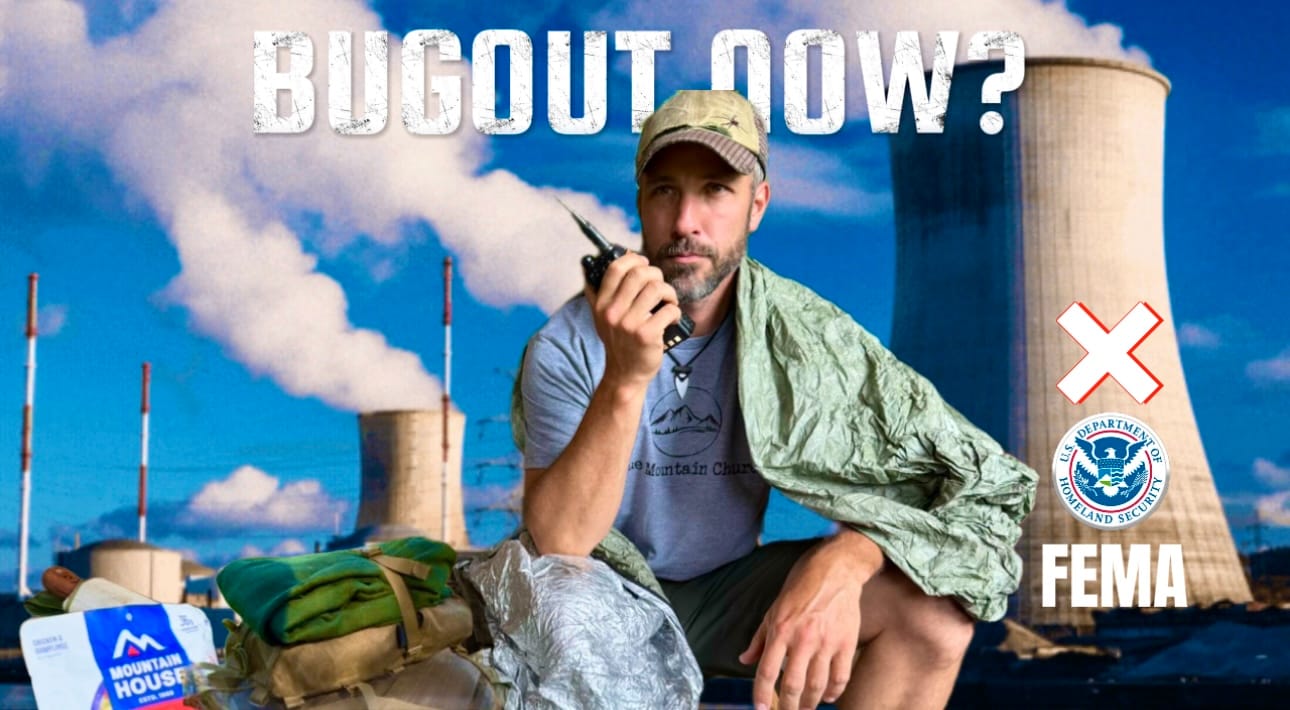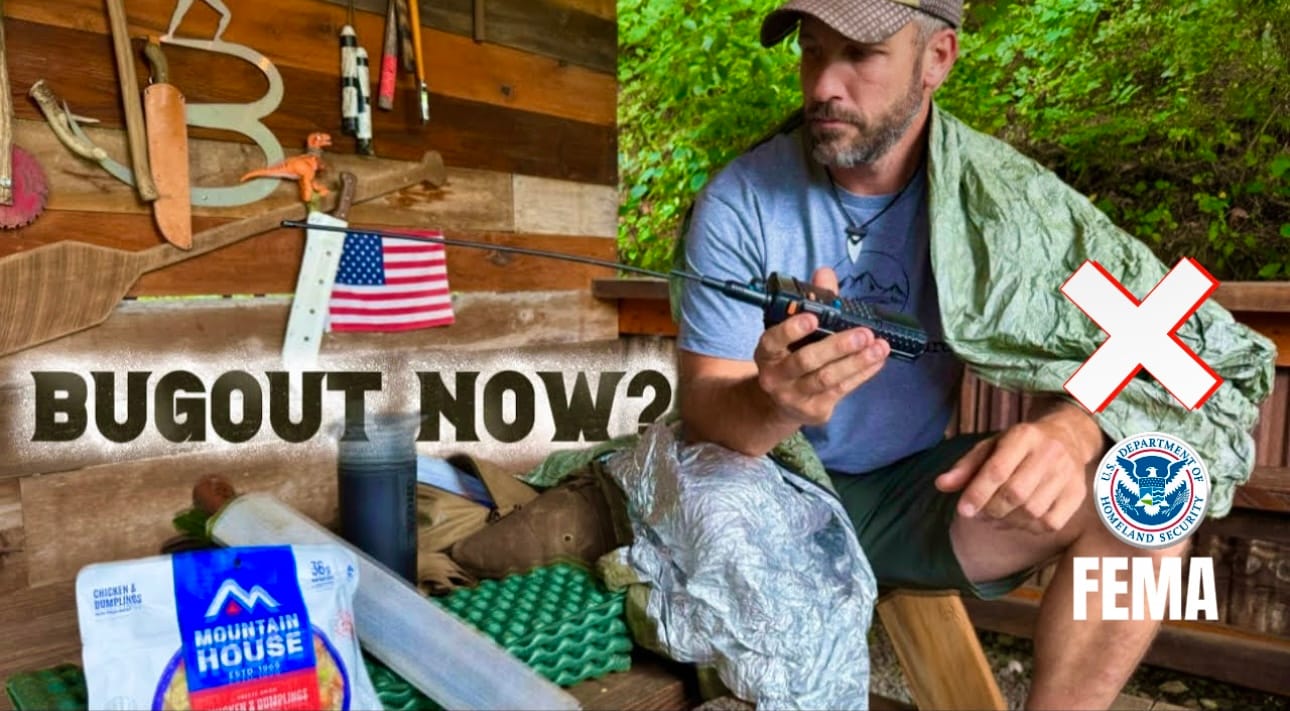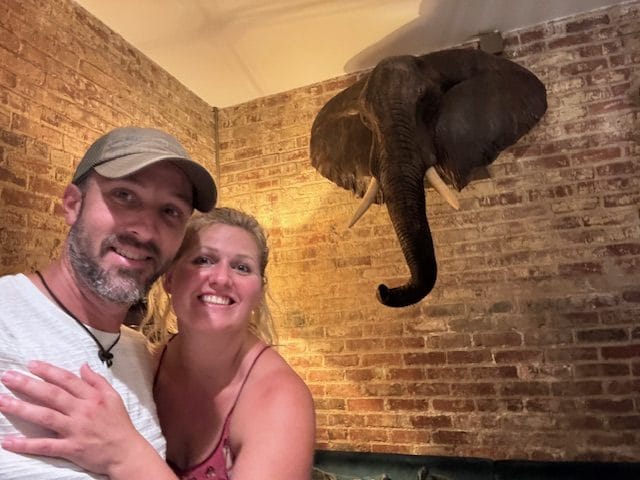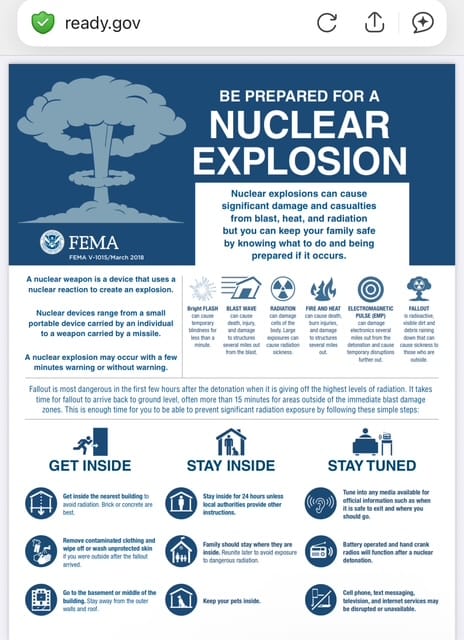
Welcome back, friends. Let's say you're sitting at home in Michigan when the news breaks that the government just dropped $1.5 billion to restart the Palisades nuclear plant. The first decommissioned nuclear facility in U.S. history to get fired back up. FEMA rolls into town with their emergency briefing, telling everyone to "stay calm, shelter in place, seal your windows with plastic and duct tape, and wait for further instructions."
Here's my question: Would you trust FEMA's plan to protect your family?
Most folks consider me an optimist. I'm not the doomsday prepper screaming that the sky's falling, and I generally don't worry about things I can't control. But when it comes to my family's safety, I don't leave critical decisions in the hands of government bureaucrats who've proven time and again they'll withhold information to prevent panic.
Let me be crystal clear. I'm not saying something will go wrong with this nuclear plant. It'll probably fire up smooth as silk and run without issues for decades. But here's the thing about nuclear incidents: when they go bad, they go really, really bad. And FEMA's advice to seal yourself in a plastic tomb while you wait for permission to evacuate? That sounds like a death sentence with extra steps.
The U.S. government is pumping serious money into restarting a facility that was shut down in 2022. This isn't routine maintenance. We're in uncharted territory here. What's the worst that could happen? Well, ask the folks in Chernobyl or Fukushima how waiting for government instructions worked out.
Want to know how close you live to a nuclear facility? I've included a link to the nuclear plant location map in my YouTube video description – drop your distance in the comments and let's see who's in the potential danger zone.
Not everything FEMA recommends is wrong but their "shelter in place" advice during a nuclear event? That’s where I draw the line.
Get inside immediately. Go to the basement or the center of a multi-story building.
Stay inside for at least 24 hours, unless local officials provide other instructions.
Seal your space: Close windows and doors. Turn off fans, air conditioners, and heating units that bring in air from outside.
Listen to media and authorities via radio, TV, or internet for updates.
This is meant to limit exposure to fallout, which is radioactive dust/debris that settles after the initial blast. Fallout can start coming down within minutes, and sheltering early is intended to reduce radiation dose.
FEMA does not account for long-term scenarios or evacuation bottlenecks.
Their advice is often one-size-fits-all, assuming everyone has a solid home, sealed basement, access to updates, and that roads will be usable later.
It relies heavily on people waiting for instructions, rather than thinking or acting independently.
They don’t address what to do if you’re caught outdoors, in a vehicle, or in a city without fallout shelters.
By the time FEMA says it’s time to move, it may already be too late. Now you’re stuck in traffic with everyone else who got the same alert at the same moment gridlocked roads, scared drivers, and possibly radioactive air.
This is exactly why I maintain my Patreon community – so we can share real-time intelligence and make decisions based on facts, not bureaucratic timelines.

If I lived within spitting distance of a nuclear facility that was about to get restarted, here's exactly what I'd do: I'd be gone before they ever flipped the switch.
Think about it. They announce the restart date well in advance. I believe they said this particular startup date is between October and November. If you live within 50-100 miles of the plant then I recommend that you stay informed on the exact date. That's your window. Pack up the family for a "spontaneous road trip" to explore somewhere you've never been. Go camping, visit relatives, take that vacation you've been putting off. Kill two birds with one stone. Keep your family safe and make some memories.
I get it. Not everyone has the job flexibility I do. You’ve got financial constraints, work obligations, kids in school. But after years of budget travel with my family, here’s what I’ve learned:
You don’t need a fortune to get out of town. For my wife's birthday, I just took her to Savannah. To stay on budget and still afford a nice dinner and a haunted history tour, we camped. It was miserably hot. If the heat didn’t keep us up, it was the homeless guy nearby yelling at an invisible person and then launching into the worst off-key performance I’ve ever heard.
Nothing says romantic getaway like sweating on top of your sleeping bag while listening to ghost karaoke at 2 a.m. The good outweighed the bad though. A good cup of coffee that morning provided enough energy to enjoy the next historic town. The point is that you do not need perfect conditions to make the right decisions. With the Palisades nuclear plant in Michigan starting back up, there’s no telling what disruptions or rolling blackouts could be ahead. I doubt it will be the next Chernobyl but prepare like it is. Let this be the time to go somewhere, pitch a tent, and make memories. Don't let finances or other excuses be the reason you don't prepare for the worst but pray for the best.

Again, I understand what it’s like to live on a tight budget. I’m a frugal prepper, not some wealthy YouTube king. YouTube doesn’t pay my bills. I still work outside of it just to afford creating videos and keeping the lights on at home.
So when I talk about being ready to move fast or bug out, it’s not from a place of luxury, it’s from lived experience and sacrifice.
Whether it's a nuclear incident, wildfire, or any other emergency that requires immediate evacuation, you should be able to grab what you need and be out the door in 10 minutes or less.
Every vehicle in my family has a lightweight pack ready to go. Every family member knows where theirs is and what's in it. We practice grabbing them and heading out. Why? Because when seconds count, muscle memory saves lives.
Here's my mental checklist for any emergency bag: Food, fire, water, shelter, security, first aid, and communications. Get those seven categories covered, and you can survive pretty much anywhere for at least three days.
Let me walk you through what's actually in my emergency pack. This isn't theoretical gear, this is field-tested equipment I've used on multiple camping trips throughout Georgia and beyond.
Shelter System: Sleep pad for ground insulation, bivvy bag for warm weather, poncho, and a 55-gallon drum liner. In Georgia's humid summers, this combination keeps me comfortable without overheating.
Food and Water: Several days' worth of easy-cook meals, metal canteen for boiling water if needed, Grayl water filter for primary water purification, and water purification tablets as backup.
Potassium Iodide: That’s something a lot of people overlook. In the event of a nuclear incident, potassium iodide protects your thyroid from absorbing radioactive iodine. It’s not a cure, but it can significantly reduce your long-term risk. It’s one of those cheap but powerful tools every family should have on hand.
Navigation and Communication: Backup compass mounted on the pack, handheld radio with upgraded antenna, extra batteries. When GPS fails and it will you better know how to find your way with analog tools.
Clothing: Spare set of dry clothes in a cinch pack long johns, wool socks, hat. Getting wet in an emergency is bad enough; staying wet can kill you.
Browse my complete gear recommendations on my Amazon Storefront – almost every item is something I personally use and trust.

Here's something that'll make your blood boil: Government agencies routinely withhold critical information to prevent panic. They'll deliberately lie to you or omit crucial details because they think you can't handle the truth.
I understand why they do this from a crowd control perspective, but it's not their family at risk it's yours. It's my responsibility to keep my family safe, not FEMA's. I'm not waiting for some bureaucrat in Washington to give me permission to protect the people I love most.
This isn't conspiracy theory nonsense. It's documented historical facts. From Katrina, COVID, Hurricane Helene to countless other emergencies, we've seen government agencies prioritize "public order" over individual safety.
How many different ways can you get out of your town? Most people know one route. The major highway everyone else will be using. That's a recipe for disaster.
When evacuation orders come down, every person in your area gets the same message at the same time. They'll all head for the same highways, creating gridlock that could trap you in the danger zone. This happens often during hurricane season in Florida. You need alternatives, back roads, county routes, paths that locals know but GPS doesn't always suggest.
Here's your homework: Next time you're heading out of town for any reason, take a different route. Make it a family adventure. "Hey kids, today we're taking the scenic route!" Get familiar with these alternate paths before you desperately need them. I do this all the time with my family including when we're traveling long distance for vacation. I don't take a break from preparedness while on vacation.
Keep actual paper maps in your vehicle. When cell towers go down or get overloaded, your smartphone navigation becomes a paperweight. But that county road map from the gas station? That'll still work when everything else fails.
Want to see exactly what's in my 72-hour evacuation pack? Head over to my YouTube channel where I break down every single item and explain why it made the cut.
Don't get me wrong having quality equipment prevents a lot of unnecessary suffering. You can have the finest evacuation pack money can buy, but if you don't know how to use a compass or start a fire in wet conditions, you're still in trouble.
This is why I spend so much time actually using this gear. I've camped with this exact setup multiple times, tested it in different weather conditions, refined what works and eliminated what doesn't. When your life depends on equipment, you better know it inside and out.
Practice setting up your shelter in the dark. Try starting a fire with wet wood. Navigate using only a map and compass. These aren't Boy Scout activities they're life skills that could save your family.
Let’s talk numbers for a minute. I live about 150 miles from the closest nuclear facility. How far are you? Drop your distance in the comments. I am curious how many of you are in potential evacuation zones.
When it comes to radioactive contamination, distance and time are your best allies. The farther you are from the source, the safer you are. The faster you get away, the less exposure you will have. FEMA’s current approach often keeps people near the source longer than necessary, which could be a deadly mistake.
After the Chernobyl disaster, the exclusion zone grew to about 18 miles. That plant’s outdated Soviet design had no containment building, which made the release far worse. Following the Fukushima accident, evacuations began within about 12 miles and later extended to voluntary evacuations out to 18 miles. That plant had containment, but it was smaller and less robust than newer designs. People still cannot live in either of those exclusion zones today, which makes me wonder what else could be released into surrounding areas when plants are active or during emergencies.
The Palisades plant in Michigan is a pressurized water reactor, which has stronger containment and a safer design than either Chernobyl or Fukushima. Even so, no nuclear facility is risk free. If you live within 50 miles of any plant, you should not take a wait and see approach if something goes wrong.
I'm not telling you to bug out every time you hear a rumor about potential problems. That's not sustainable or practical. But I am saying you need to be prepared to make that call when the situation warrants it.
The Palisades restart is happening whether we like it or not. For folks in that area, it's a legitimate opportunity to practice evacuation procedures, test your gear, and see how your family handles being away from home for a few days. Make it fun and create memories.
What's the worst that could happen if you take a precautionary road trip? You spend a few days camping with your family, exploring somewhere new, and return home to find everything went smoothly. That's a win-win scenario in my book.
P.S. Share this newsletter with someone who needs to hear it. The prepping and survival community is filled with fantasies. Let's spread some reality instead.
Explore the gear and supplies I personally use and trust. When you purchase through my Amazon storefront and other affiliates I earn a small commission at no extra cost to you. These small commissions help support the creation of informative free content for you to enjoy.
Wazoo Survival Gear https://wazoosurvivalgear.com/?aff=ON3 (Discount code GOON32025)
Bear Forest Knives
Exotac https://www.exotac.com/?ref=7d2vkc2wfx (Discount code On3)
PNW Bushcraft Made In America Canvas Bags https://www.pnwbushcraft.com/collections/waxed-canvas-bags/products/drawstring-cinch-pack-by-pnwbushcraft

